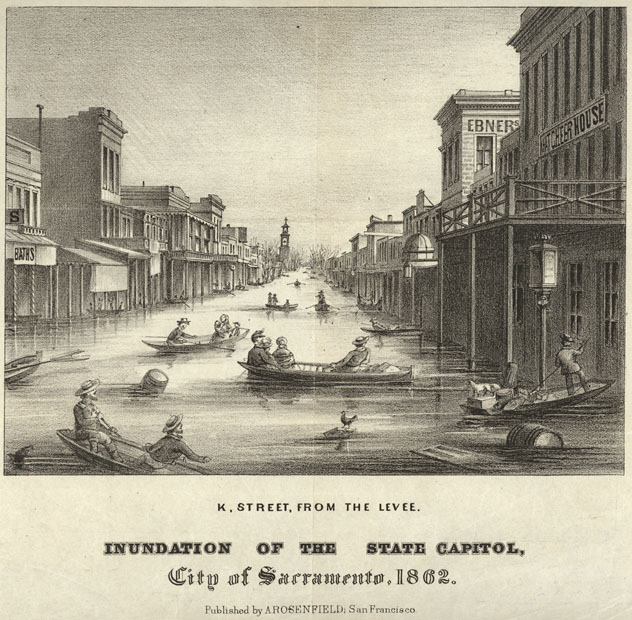California’s Other Storm of the Century
The extreme rain pummeling Southern California mirrors extreme weather incidents around the globe. Should the heavy rain in California persist, as the soil becomes saturated, mudslides and flooding follow.
The video below shows an example of the results of extreme rain. A mudslide in Maierato, Calabria, Italy, results as the soil becomes saturated with rain. Liquefaction of the land occurs – the earth, rock and soil flow like a river, carrying trees, homes, anything on the surface down hill. The video is visually astonishing.
 As climate change progresses, weather extremes increase. New records are increasingly set for heat, cold, draught, and rain. Climate models predict an increase in the frequency and severity of extreme rainfall events.
As climate change progresses, weather extremes increase. New records are increasingly set for heat, cold, draught, and rain. Climate models predict an increase in the frequency and severity of extreme rainfall events.Sh!t Rolls Downhill
Insurance companies were some of the early businesses embracing climate change models and planning for how to mitigate losses. Weather related losses are growing exponentially. Just as with earthquake insurance, as insurance companies limit their exposure to losses due to climate change and extreme weather, property owners will be forced to make choices on whether to pay higher insurance premiums or go uninsured. Faced with extremely expensive premiums, only about 12% of California property owners choose to pay for earthquake insurance. When an extreme event happens, the property owner often ends up with the loss.
In California, climate change is especially pernicious. During summer, persistent warming and draught lead to wildfires and denude the land, then, during the winter months, extreme rain sets the stage for disastrous mudslides and flooding.
Coincidentally, the US Geological Survey (USGS) just announced that they are about to release an emergency preparedness plan for extreme storms:
The USGS Multi Hazards Demonstration Project (MHDP) is preparing to release a new emergency-preparedness scenario, calledARkStorm, to address massive U.S. West Coast storms analogous to those that devastated California in 1861–62. Storms of this magnitude are projected to become more frequent and intense as a result of climate change.The MHDP has assembled experts from the National Oceanic and Atmospheric Administration (NOAA), USGS, Scripps Institute of Oceanography, the State of California, California Geological Survey, the University of Colorado, Federal Emergency Management Agency (FEMA), the National Center for Atmospheric Research (NCAR), California Department of Water Resources, California Emergency Management Agency (CalEMA) and other organizations to design the large, but scientifically plausible, hypothetical storm scenario that would provide emergency responders, resource managers, and the public a realistic assessment of what is historically possible.
California’s Storm of the Century
Beginning on Christmas Eve, 1861, and continuing into early 1862, an extreme series of storms lasting 45 days struck California. The storms caused severe flooding, turning the Sacramento Valley into an inland sea, forcing the State Capital to be moved from Sacramento to San Francisco for a time, and requiring Governor Leland Stanford to take a rowboat to his inauguration.
William Brewer, author of “Up and down California,” wrote on January 19, 1862, “The great central valley of the state is under water—the Sacramento and San Joaquin valleys—a region 250 to 300 miles long and an average of at least twenty miles wide, or probably three to three and a half millions of acres!”
In southern California lakes were formed in the Mojave Desert and the Los Angeles Basin. The Santa Ana River tripled its highest-ever estimated discharge, cutting arroyos into the southern California landscape and obliterating the ironically named Agua Mansa (Smooth Water), then the largest community between New Mexico and Los Angeles. The storms wiped out nearly a third of the taxable land in California, leaving the State bankrupt.
Here’s a drawing of Sacramento in 1862, after the storm.








No comments:
Post a Comment